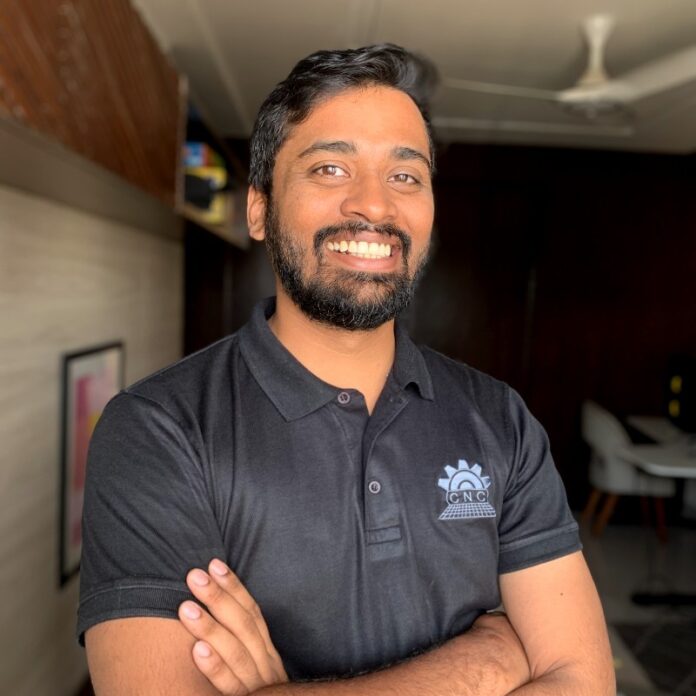CNC Technics, led by CEO Rohit Bandaru, has spent the past decade specialising in designing, manufacturing, and applying multi-axis CNC filament winding machines and their accessories. The company, initiated by a pioneering technocrat from a top-tier global engineering institution and bolstered by a highly skilled team of over 50 engineers and technicians, is committed to producing high-quality and affordable filament winding machines.

1. How do you define CNC Technics’ core vision?
We aim to stay on the cutting edge of innovation in this industry and to introduce new products to the Indian ecosystem that have not been in the Indian market before.
2. How did the CNC Technics-ISRO partnership start?
As a cutting-edge machine manufacturer in this industry, we were approached by VSSC to help them develop this line of components. We started working with ISRO in 2007, and it took us seven years of trials and development before the first components were deemed flight-ready.
From that point, we have been developing new components for all the latest launch vehicle designs, which are progressively getting larger.
3. How do CNC techniques ensure quality in cryogenic fuel lines for ISRO?
Some processes and procedures have been set in place to ensure reliability. These processes were developed over the course of the R&D phase of the products. Overall, there are various stages of tests that continue to be executed even after our products are cleared, as the product is integrated into larger assemblies all the way up till the launch.
4. What measures ensure precision in CNC Technics’ aerospace components?
We have benefited greatly from the experience and knowledge the Space Agency and the research scientists passed down to us. Various factors are measured: materials, engineering, design, safety, and manufacturing. These factors are far more stringent in the aerospace sector than the industrial sector. All the above points are controlled and measured with far greater attention to detail since a space launch is like a house of cards. A single component failure will bring down the whole mission.
5. Are there upcoming CNC Technics-ISRO collaborations you can share?
We have research work in progress with ISRO which are part of continuous collaborations with them but which we cannot discuss as of now.
6. How is CNC Technics preparing for future aerospace demands?
CNC has invested a lot of research and development in various engineering spheres
■ Material engineering
■ Material processing and production
■ Moulding engineering
■ Process engineering
■ Robotics
We are gradually expanding to take on more complicated projects.
7. Any standout moments from the ISRO partnership for CNC Technics?
• In 2017, ISRO successfully launched a world record of 104 satellites in a PSLV C-37 launch. This had our cryogenic fuel lines as well. (https://www.isro.gov.in/SuccessfullyLaunches104.html)
• In 2023 we supplied cryogenic fuel lines for the successful launch of
Chandrayaan 3.
8. What’s CNC Technics’ future vision for space exploration in India?
We aim to play a growing role in developing and fabricating space-ready products for the ecosystem.
9. What advice would you give to firms aspiring to start in the Aerospace sphere?
Strong attention must be paid to engineering fundamentals; one must be able to master their craft to be able to contribute products that are consistent, reliable, and predictable in their operation.




